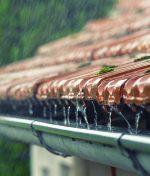What Are the Best Practices for Drying Out Your Home After a Flood?

- September 18, 2024
- byadmin
- Flood Restoration
Flooding can be one of the most stressful events for any homeowner. Water seeping into every corner of your home not only damages property but also creates the perfect conditions for mold and mildew growth. Quick and efficient drying is crucial to prevent further damage and restore your home to a livable condition. In this article, we’ll cover the best practices for drying out your home after a flood, ensuring safety, health, and property preservation.
1. Ensure Safety First
Before beginning any drying process, it’s important to prioritize safety. Floodwaters can be contaminated with bacteria, chemicals, and even sewage, which pose significant health risks. Additionally, standing water can cause electrical hazards if it’s in contact with live wires or electrical appliances.
Best Practices:
- Turn off the electricity in areas affected by water damage to prevent shocks or electrical fires.
- Wear protective gear such as rubber boots, gloves, and masks to protect yourself from contaminated water.
- If there’s a risk of structural damage (like collapsing walls or ceilings), avoid entering the property until a professional can assess the situation.
- Call a professional restoration company like RAMM Water Restoration if there’s extensive damage or the risk of contamination is high.
2. Start by Removing Standing Water
Once it’s safe to enter, the first step is to remove any standing water. The longer water sits, the more damage it can cause, leading to mold growth, weakening structural integrity, and ruining furniture, carpets, and personal belongings.
Best Practices:
- Use pumps or wet/dry vacuums to remove standing water quickly. If the flood is minor, a mop and bucket may suffice.
- For larger amounts of water, consider renting a sump pump or hiring professionals like RAMM Water Restoration to bring in high-powered equipment.
- Clear out clogged drains and gutters to help with water removal and prevent further flooding during rainfall.
3. Dry and Dehumidify the Area
Once the standing water is removed, the drying process begins. However, water can seep into walls, flooring, and even insulation, so it’s essential to dry these areas thoroughly to prevent long-term damage like mold growth.
Best Practices:
- Use industrial-grade dehumidifiers to remove excess moisture from the air, which will speed up the drying process. Dehumidifiers help prevent secondary damage by reducing humidity levels.
- Place fans and air movers in affected areas to promote air circulation and drying. Point fans towards the wettest areas to maximize efficiency.
- Open all windows and doors, weather permitting, to allow for cross ventilation. Fresh air can significantly aid in the drying process.
- Remove wet materials such as carpets, rugs, and upholstery and place them in a dry, ventilated area to prevent mildew growth.
4. Inspect and Dry Walls, Floors, and Furniture
Floodwater can seep into your walls and flooring, which can cause long-term damage if not addressed quickly. Mold can grow within 24-48 hours, and wood or drywall can deteriorate if left wet for too long.
Best Practices:
- Remove baseboards and drywall that have been soaked with water, especially if floodwaters were contaminated. Cut away sections of drywall at least 12 inches above the waterline.
- Check for hidden moisture in walls with a moisture meter. Sometimes, even when walls appear dry, moisture can still be trapped inside.
- If you have wooden flooring, consider removing the boards to dry the subfloor. Warped or buckled wood may need to be replaced entirely.
- For furniture and personal belongings, it’s essential to assess if they can be salvaged. Solid wood furniture can often be dried and restored, but upholstered furniture may be too contaminated to keep safely.
5. Prevent Mold Growth
Mold is one of the most significant concerns after flooding. Not only can it cause health problems, but it can also ruin walls, furniture, and other materials. Mold spores spread quickly in damp environments, so it’s essential to take immediate steps to prevent it.
Best Practices:
- Use antimicrobial treatments on affected areas to kill any potential mold spores.
- Continuously run dehumidifiers to reduce indoor moisture levels.
- If you notice any visible signs of mold (black or green spots on walls, floors, or furniture), it’s best to call professionals like RAMM Water Restoration to perform mold remediation.
- Monitor your home for musty odors, a common sign of hidden mold growth.
6. Monitor the Drying Process
After the initial drying process, it’s essential to continue monitoring the affected areas. While things may appear dry on the surface, moisture could still be trapped in materials like insulation or under flooring.
Best Practices:
- Regularly check moisture levels using a moisture meter until they return to normal. This tool will help you determine when your home is fully dry.
- Be patient. Drying can take several days, depending on the extent of the flooding and the size of your home.
- Inspect crawl spaces, attics, and basements for hidden water or dampness. These areas are often overlooked but can be breeding grounds for mold and structural damage.
7. Work with a Professional Restoration Company
Drying out a home after a flood is a complex and labor-intensive process, and without the right tools and expertise, homeowners risk missing hidden moisture that could lead to bigger problems down the road. Working with a professional water restoration company ensures the job is done correctly, safely, and efficiently.
Best Practices:
- A certified water restoration team, like RAMM Water Restoration, uses advanced equipment and techniques to remove all moisture from your home.
- Professional companies have the expertise to handle mold remediation and restore your home to its pre-flood condition, reducing the risk of future issues.
- Professionals can help with insurance claims, providing the necessary documentation to ensure you receive fair compensation for damages.
How We Can Help
At RAMM Water Restoration, we know that dealing with the aftermath of a flood is an emotional and stressful time. That’s why we offer compassionate, friendly, and expert restoration services to help dry out your home quickly and efficiently. From advanced water extraction to mold remediation, we have the tools and knowledge to ensure your home is restored to its pre-flood condition. Our team is here to support you every step of the way, so you can focus on moving forward with peace of mind. Trust RAMM Water Restoration to handle the tough work with care, compassion, and professionalism.
Categories
Recent Posts
The Ultimate Pre-Storm Checklist for San Diego Homeowners
October 10, 2025
How San Diego’s Climate Contributes to Seasonal Water Damage Risks
October 10, 2025









